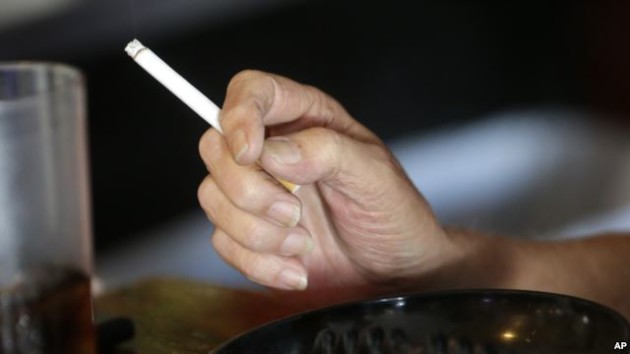Research May Yield Clues About Why Bad Habits are Hard to Break
 January 22: Have you already broken a New Year resolution to kick a bad habit? New research may explain the reason it’s so hard to change that pattern of behavior.
January 22: Have you already broken a New Year resolution to kick a bad habit? New research may explain the reason it’s so hard to change that pattern of behavior.
Research by Duke University scientists suggests that habits leave a lasting mark on certain circuits in the brain, “priming us to feed our cravings.”
The researchers trained mice to form varying degrees of a sugar habit by giving them sweets if they pressed a lever. The mice that became addicted kept pressing the lever even without being rewarded with a sweet.
The scientists then compared the brains of the sugar-addicted mice with those that didn’t develop a habit. In particular, they looked at the basal ganglia, “a complex network of brain areas that controls motor actions and compulsive behaviors, including drug addiction.”
The basal ganglia, researchers said, emitted two kinds of messages, a “go” message that spurs action and a “stop” signal.
“One day, we may be able to target these circuits in people to help promote habits that we want and kick out those that we don’t want,” said Nicole Calakos, the study’s senior investigator and an associate professor of neurology and neurobiology at Duke University Medical Center.
In the addicted mice, researchers said the stop and go signals were “more active.” The researchers said they expected the stop signal to be less active in an addicted brain.
For the non-addicted mice, the stop signal was turned on before the go signal. The reverse was the case for the addicted mice.
“The go pathway’s head start makes sense,” said Calakos. “It could prime the animal to be more likely to engage in the behavior.”
The researchers are testing this idea, as well as investigating how the rearrangements in activity occur in the first place.
The researchers noted that the changes in the circuits occurred over the “entire region of the basal ganglia they were studying as opposed to specific subsets of brain cells.” The changes were “long-lasting and obvious” to the point researchers could tell which brain was addicted by looking at small pieces in a petri dish.
This, researchers say, may be why one addiction can lead to others.
As part of the research, the scientists wanted to see if they could break habits in the mice, by only giving them sweets when they stopped pressing the lever. The mice that broke the habit had “weaker go cells.”
This could lead to helping humans break bad habits, but since the basal ganglia is so complex, it will be hard to target with drugs, said the researchers.
Calakos said some of the scientists are already using transcranial magnetic stimulation or TMS, a non-invasive technique that sends magnetic pulses to parts of the brain to help patients with severe addiction.
The findings are published in the journal Neuron. (Voanews)
